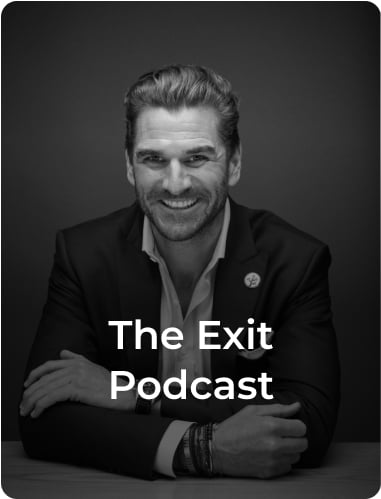
In 2021, Amazon represented nearly 50% of all ecommerce sales for a total of $378.95 billion in gross merchandise value. And as an Amazon affiliate, you have the chance to turn that slice of that billion-dollar pie into a sweet side hustle or a full-time income.
Since nearly everyone shops at Amazon, Amazon Associates is one of the easiest ways to get started with affiliate marketing programs.
But just because getting started is easy, doesn’t mean you’ll get rich overnight.
Building a successful, predictable affiliate business off the back of Amazon can take years of trial and error to get right. And a single rate cut to destroy it if you’re not careful.
Luckily, we’re here to help you jump ahead with this guide to Amazon Associates and tips for building a profitable and resilient Amazon affiliate business.
What is Affiliate Marketing with Amazon?
Affiliate marketing with Amazon means referring visitors to your website to Amazon products through a special tracking link that helps you get credit for the referral.
If the person you referred makes a purchase on Amazon within 24 hours of clicking your link, you’ll receive an affiliate commission for your role in the sale.
The beauty of the Amazon affiliate program is that the person you refer doesn’t need to buy the exact item you recommended for you to earn a commission. Instead, you can earn a percentage of the entire order value that results from your referral.
How do you get people to click your links and buy your recommendations? Amazon affiliates promote affiliate links through a variety of content types, including social media posts, YouTube videos, product reviews, roundups and comparisons, gift guides, and more.
Benefits of Being an Amazon Affiliate
Amazon isn’t only the world’s largest affiliate marketing program, but it’s the easiest one to start off your journey as an affiliate marketer. Here are a few reasons why:
- Everyone shops at Amazon. By early 2020, over 80% of adults in the United States had become Amazon Prime members.
- Brand trust. Amazon is the United States’ second most trusted brand after the US Postal Service.
- Highly optimized checkout flow. For Amazon merchants running ads, their average conversion rate is a whopping 10% – compared to an average 1.3% among other ecommerce sites.
- Massive range of products in every niche. Amazon sells over 12 million products, so there’s sure to be something in there for your audience.
- Fast and reliable payouts. If you’ve generated revenue for Amazon, you can expect timely and predictable payouts.
Sounds like a good deal? Here’s how to become a successful Amazon affiliate in 7 steps.
How To Become a Successful Amazon Affiliate in 7 steps
Becoming a successful Amazon affiliate takes more than filling out a form. You have to develop a strategy to make your business successful, even if you’re starting small today.
Here’s how to become a successful Amazon affiliate:
- Learn the programs policies and operating agreements
- Research and create your marketing channel
- Become an Amazon affiliate
- Create and promote your affiliate links
- Get your first payout
- Optimize your content with the Earnings Report
- Scale your Amazon affiliate operation
Let’s get started.
Step 1. Learn the program’s policies and operating agreements
The two official sources of Amazon’s policies include the Operating Agreement and Program Policies. Here are the key points you need be aware of as an Amazon affiliate:
- Include a compliant disclosure on the page where you’re promoting affiliate links, which doesn’t entice the reader to use your links (i.e. using language such as “support this site”)
- Link to Amazon only from public locations, such as an approved website or a public social media profile. Amazon links in emails and ebooks are prohibited.
- Make 3 compliant Amazon commissions in your first 3 months in order to stay an active part of the program.
- Don’t try to refer friends or family through your links. Not only is it against Amazon’s policy, but Amazon is clever and you won’t get commissions for these sales.
With that in mind, it’s time to pick your niche and create your first marketing channel.
Step 2. Research and create your marketing channel
You can promote Amazon affiliate links on a website, a social media profile, YouTube channel, or any number of other public marketing channels.
But the most popular way to promote Amazon affiliate links is through your own affiliate website.
Before you set up website hosting and buy a domain name, you’ll need to decide which niche you want to enter based on its earning potential and level of competition.
To pick an affiliate niche, you’ll want one of these three formulas:
- High volume, high commissions. This is the most competitive type of affiliate marketing, in niches like web hosting, SaaS products, and finance.
- Low volume, high commissions. This is a bit of a sweet spot, but usually relies on finding untapped niches that most people won’t realize is profitable and involves a bit of risk in case the niche doesn’t work out.
- High volume, low commissions. This is where you’re selling consumer goods, and the commissions are low but you can compensate for that by selling a lot of product.
At Affilimate, we’ve found that Amazon affiliate websites tend to fall into that last category. To achieve monthly revenues of $10,000 per month, most Amazon affiliates need over 100,000 monthly visitors to their commerce content – which is a lot of traffic for beginners!
But you can start affiliate marketing with a goal of $1,000 per month and achieve that with far less.
Once you’ve chosen a niche, it’s time to create your marketing channel. Choose a domain name, set up some web hosting, pick a blogging platform like WordPress, and start writing content that targets affiliate keywords.
After you begin to receive your first traffic and clicks, it’s time to become an Amazon affiliate.
Step 3. Become an Amazon Affiliate
To stay in the Amazon associates program, you need to generate at least three orders through your affiliate links every 90 days.
That’s why you actually shouldn’t apply for Amazon Associates with a brand new website or social media account. You’ll want to be confident you’re getting enough traffic and clicks for those first couple of conversions to be in the bag.
Already got an established site? Here’s how to become an Amazon affiliate:
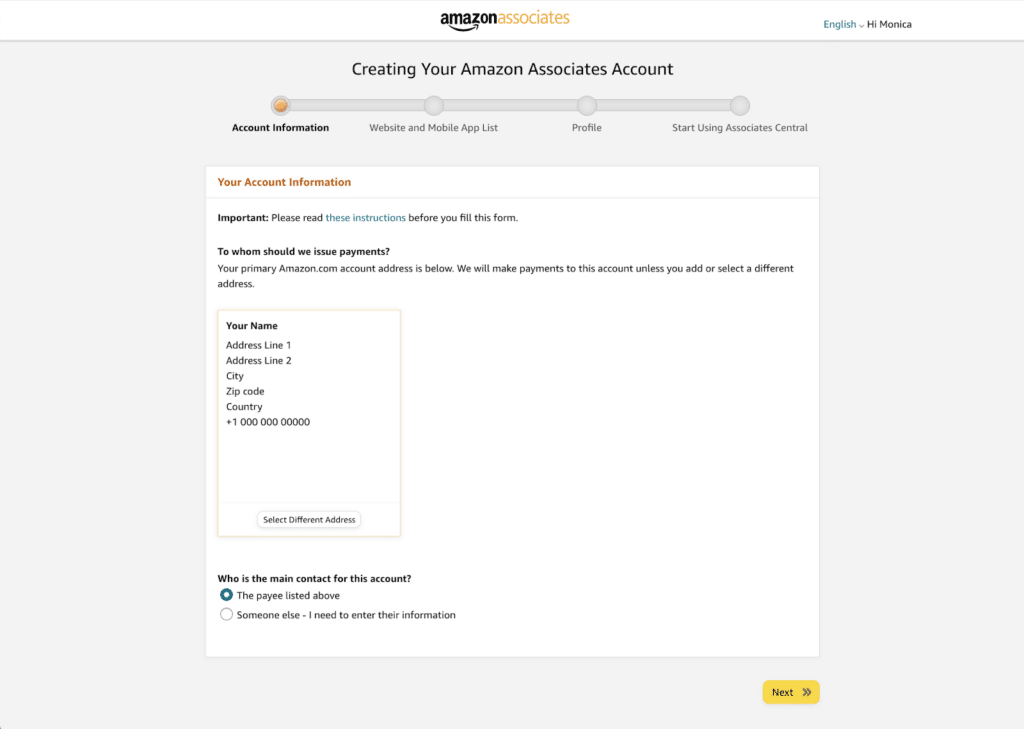
Start on the Amazon Associates signup page and then:
- Provide your account information. If you’re already logged in to Amazon, this will prefill with your address. Then click Next.
- Share your list of websites and mobile apps. Amazon wants to know exactly which traffic sources you’ll be using to promote your affiliate links.
- Fill out your profile. This includes payout details and tax information that Amazon needs to understand how to
- Get access to Associates central. This is where you’ll see your new commissions and how many clicks Amazon is receiving from your website.
- Make your website compliant. Make sure you’ve included a disclosure on each page on your website where you plan to promote Amazon links.
- Create and promote your first Amazon affiliate links. Finally, it’s time to create links, send traffic, and earn commissions.
Here’s more on that last step.
Step 4. Create and promote your Amazon affiliate links
Once you get accepted to the Amazon affiliate program, you’ll be able to activate your account and get access to Site Stripe.
Site Stripe is a widget that shows up at the top of Amazon. It lets you generate affiliate links for any page on the website by choosing the link type (Text, Image, or Text + Image) and then pressing Get Link:
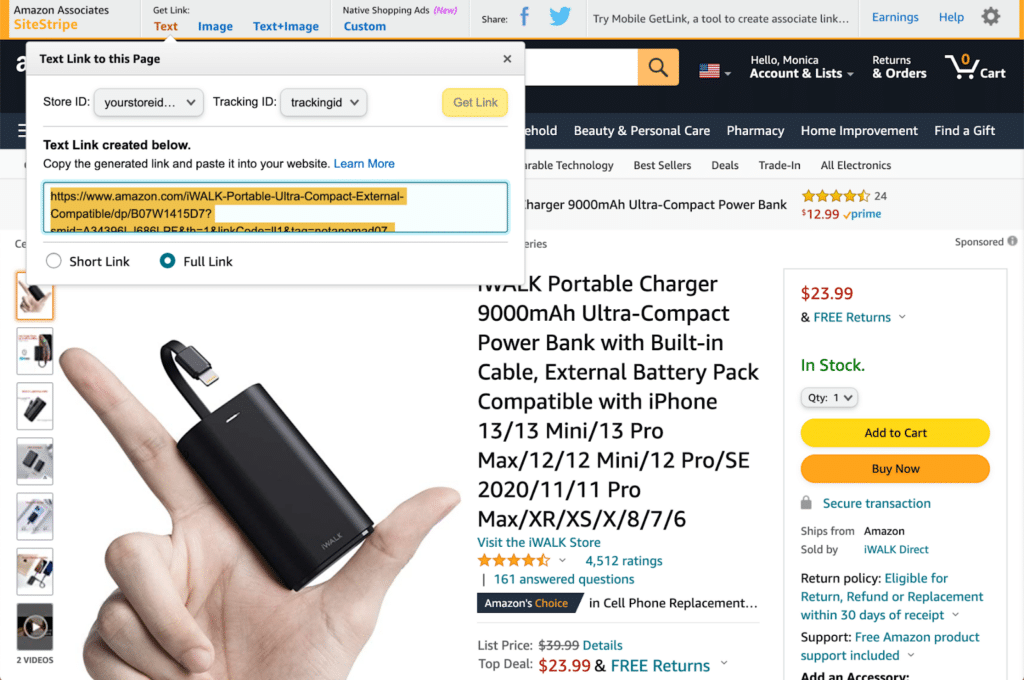
If you’re going to be putting Amazon links on your affiliate website, my recommendation is to use the Full Link option. This is because you’ll be able to track Amazon affiliate links on a page-level by creating unique Tracking IDs.
Plus, it’s infinitely easier when you eventually sell your website on a marketplace like Flippa for the buyer to replace your Tracking IDs with their own.
Now that you’ve got your affiliate link, it’s time to promote it.
Some of the best ways to promote affiliate links include:
- Writing product reviews and roundups people can find through SEO
- Building out a resource page on your website with your favorite products
- Using other channels like Quora, Twitter or Instagram to promote affiliate links
- Share deals and coupons through an email newsletter (without including affiliate links directly in your emails – which is against Amazon’s terms of service!)
Finally, if your website gets meaningful traffic from multiple countries, you may want to consider localizing your links. In essence, you’ll increase your conversion rate by ensuring that readers from different countries are routed to the correct Amazon store.
Amazon does have a built-in option for this called One Link. But there are also third-party alternatives to One Link like Geniuslink which give you more control over the user experience and can help you diversify your affiliate income by offering alternative buying options.
Step 5. Get your first payout
Once you’ve generated the required three sales in 90 days, you’re probably wondering when you’re going to get paid.
Amazon’s minimum affiliate payout is $10, which you may or may not make from those first three sales. Once you reach that threshold, Amazon pays out on a two month delay. For instance, commissions generated during January are eligible for payout in March.
To find your pending payments, click your email address and then Payment History:
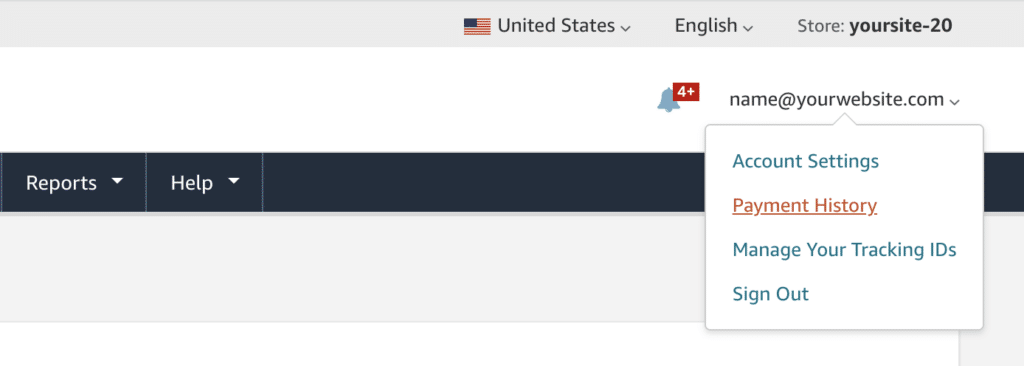
There you’ll be able to see any commissions you’re owed for the next payout period:
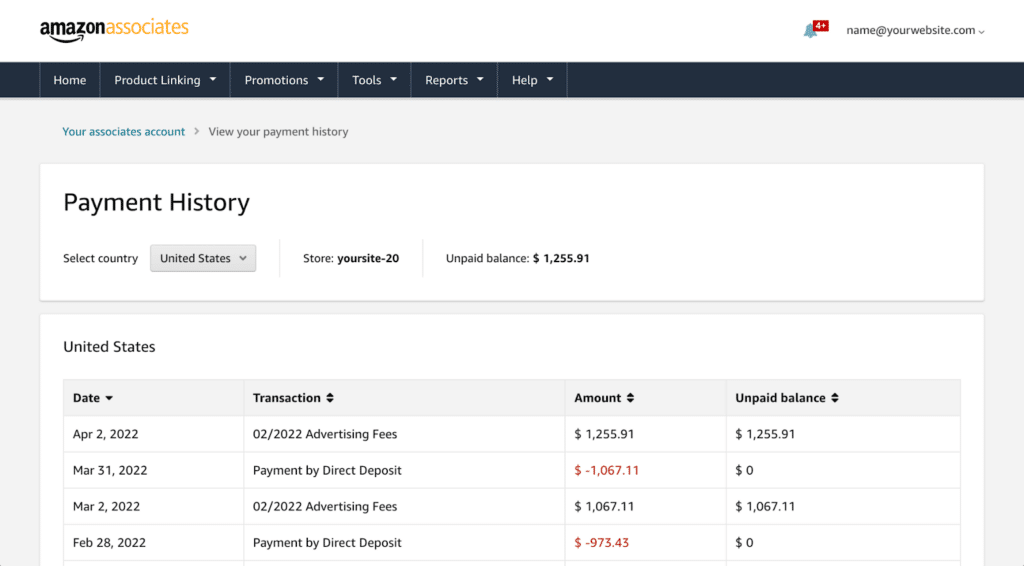
To make sure you’ll be paid promptly, be sure to have your tax information and payout details all filled out before the monthly transfer happens.
Step 6. Optimize your content with the Earnings Report
Now that you’ve got some commissions under your belt, it’s time to start optimizing your content. Under Amazon Associate’s Reports tab, you’ll find a few different ways to look at your earnings and adjust your content.
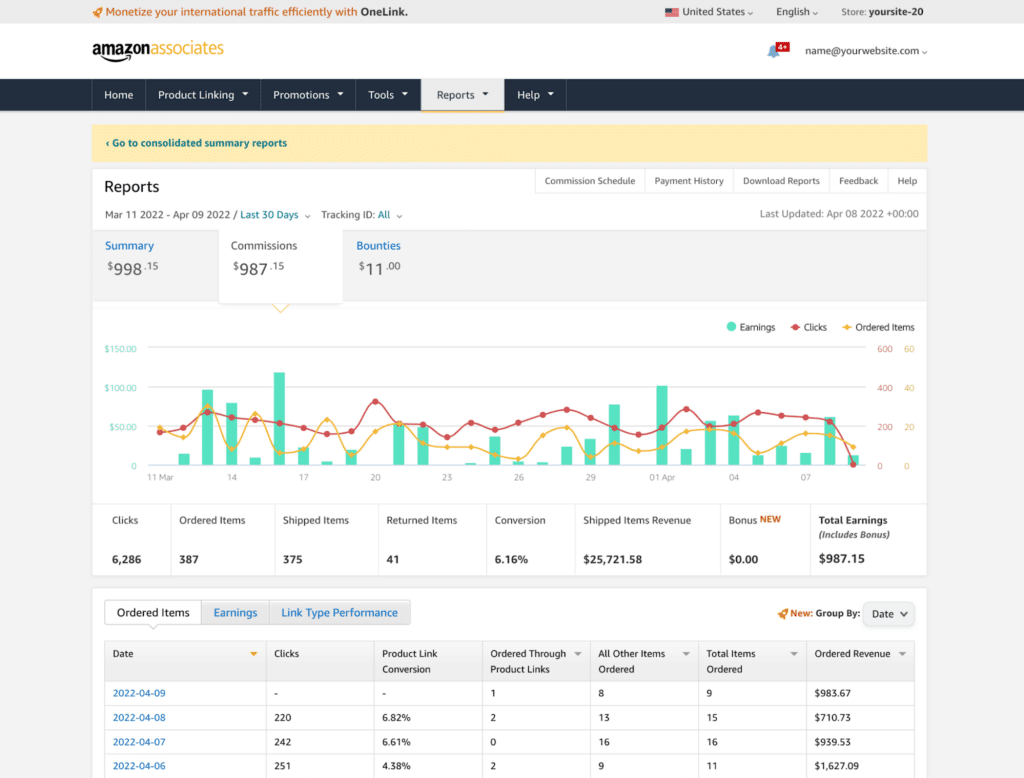
For example, if you want to know which Amazon product categories are most profitable for you so far, you can use the Earnings Report and group by Category:

In this example, you can see that Camera, Photo, & Video is the most profitable category. So this person may want to create more content about those categories.
You can also run reports by Tracking ID:

And if you took my advice about creating one Amazon Tracking ID per page, you’ll be able to see which articles are earning the most on your website.
In general, the key ways to optimizing an Amazon affiliate website are:
- Find profitable, high converting products
- Understand which types of content convert best
- Create more of those content types about those products
- Rinse and repeat
The simplicity of this model is why so many people recommend Amazon for anyone who is just getting started with affiliate marketing. But it also comes with unique challenges when it comes to scaling your operation.
Step 7. Scale your Amazon affiliate operation
As I shared earlier, growing a large Amazon website quickly turns into a numbers game. More content, means more traffic, means more clicks, means more commissions.
But what are some strategic ways to get more bank for your buck without going broke on content writers? Here are my top tips:
- Spend time optimizing existing content. You can double or triple your Amazon commissions just by optimizing your existing affiliate content. Try different styles of buttons, comparison boxes, anchor text, and images. Popup plugins are another popular way to give readers one last chance to click before they leave the page.
- Promote high-converting products in multiple formats. Found a great product that converts well? Include it in a number of different roundups and reviews. You can even re-use bits of content across articles or repurpose this content to podcasts or vlogs to save on costs.
- Create multiple websites in the same category. Once you’ve found a profitable category, you can create multiple pieces of content across multiple sites and rank for all of them.
- Offer Amazon alternatives when possible. Amazon’s commission rates are not as high as they once were. Even if Amazon is your preferred merchant, you can offer multiple retailers (which is in line with Google’s product review updates as well).
- Hire a VA to help you. Trying to do everything yourself is only going to take you so far in the Amazon game. Getting a virtual assistant on board doesn’t have to be expensive and you can start with just a few hours per week of help.
If you’re just getting started, ignore this advice for now. Your first goal as an Amazon affiliate is making your first commission. Then your 100th. And then your first $1K.
Don’t spread yourself too thin until you’ve started to generate predictable monthly commissions, no matter how small.
Is the Amazon Affiliate Program Worth It?
These days, over 80% of brands have an affiliate program. Is Amazon going to be the best one for you as you build out your affiliate content business?
The answer is: it’s complicated.
Amazon’s conversion rate is astronomical compared to most other online retailers. The sheer amount of data and resources they’ve dedicated to achieving this is practically a modern marvel. Amazon affiliates regularly see conversion rates of 5-10%, compared to typical ecommerce values which average less than half.
But conversion rate isn’t the entire story. Average order value, average commission, and the ability to build a relationship with your affiliate partners all play a huge role in building a resilient affiliate business.
Then there’s the fact that Amazon’s commissions are constantly shrinking. Many in the affiliate industry speculate that this program will disappear one day, leaving a lot of site owners in the dust. And you don’t want that to happen to you.
Whether It’s Now or Later, Always Diversify
My recommendation? Always choose an affiliate niche where you have options to diversify from Amazon later on. Find out more information on affiliate marketing programs that will grow your revenue here.
Learning affiliate marketing is hard enough when you’re also trying to learn SEO, conversion rate optimization, and how to run a website. Adding on top the complexity of selecting affiliate offers, using numerous affiliate portals, and optimizing for each one could be too much for beginners. But don’t put all your eggs in the Amazon basket long term.
Choose niches where you see your competitors promoting retailers besides Amazon, especially in their most popular content. This is a strong clue that alternative offers are also generating significant revenue for the site – and could for yours as well.
Diversified revenue streams not only keep your business safe from future rate cuts, but look great to website buyers as well.
So go forth and build your successful affiliate website! The commissions are yours to be made.

Recommended for you
Discover more from Flippa
Subscribe to our Blog
Get the latest blog posts, insight reports and news directly to your inbox every week.



















